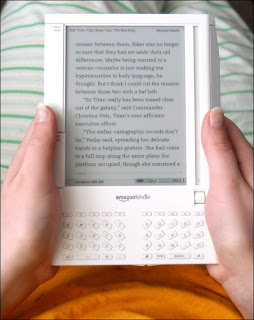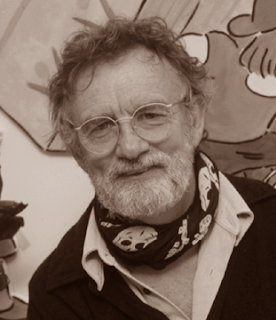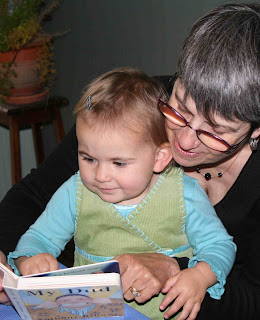I recently noticed a comment on an old post that I'd missed. The comment was on a post titled
"The importance of play - Part 2". It was left by Prue some months ago. It was such a good question that I thought I'd answer it even if I'm late. I'd been talking about the importance of parents playing supportively with their children. Her comment was as follows:
"Just in case you are checking back this far Trevor, I never know HOW to play with my four year old son. He gets out his aeroplanes and says 'play with me', and then I zoom a plane through the air and that's it for me - I can't work out what to do next. I feel bad admitting it, but I'm just not sure that I'm very good at it!"Readers of this blog know that I'm a tragic grandfather (and I was a similarly tragic and involved Dad - and still am!). I spend a lot of time on the floor playing with my grandchildren and the boys (Jacob 5 and Samuel 2), in particular, love to play creative games with cars, planes and animals. My granddaughters also like to play with animals, dolls, little people (especially my grand daughter Rebecca who is 3), but the play is always different from that of the boys. I'll blog on this in more detail later.
 Some thoughts on playing creatively with young children (in particular with toys)
Some thoughts on playing creatively with young children (in particular with toys)1. Objects like planes, cars or trains are often a prop to do one of about three things - tell stories, explore space and make noises as part of physical activity. Here’s how I interact with my grandsons as we use them together:
- Start moving a plane, or car making noises as you do it and interacting with your child's vehicle (whatever it is). Drive towards him, bip the horn, speak. Tell stories no matter how lame - "Oh no, here comes your car, bip, bip, move over. Hi my name is Billy, what's your's?" "Would you like to come for a drive with me?" "Watch out for that bump..CRASH..oh no, now I'll have to go to the garage (you say as driving your car under the lounge." "Oh let's make a garage" (you rush off for a plastic container or a shoe box).
- Over time perhaps give all the cars names that are easy to remember (he'll revisit these names with you and also when he's alone) - I use tricks to help me remember any I name (e.g. the blue one becomes "Billy", the green one "Greg", the red one "Rachel" etc).
- A crash or two never goes astray either - boys just love crashing things. Drive them up the side of the lounge chair and accidentally push one over the edge. Call out to your son to bring his car to rescue you because you're stuck in the gully, the river, the swamp....
- Draw on story characters and existing stories in association with your creative play - Thomas the Tank engine trains are ideal for this. You can retell known stories or make up new stories consistent with the characters or their language. The kids will love using the language they've heard from books or television stories - "You pouty puffer", "Oh cinders and ashes", "Bust my buffers", "I'm an EXPRESS engine not a common tank engine" etc.
2. Plastic animals have limitless possibilities - for the young (under 12 months) you can interact by making noises, you can give the animals language, they can attack (our snakes are always doing that!), hide, ambush, run away scared etc. Animals can also interact with plastic people (
Little People from Fisher Price are ideal for this). Jacob always loves his dinosaurs (he now knows the names of just about every known dinosaur and can pronounce them - which I can't) and his sea creatures. At times the animals and the vehicles interact with varied consequences.
3. I find that the reading of stories or watching television together always stimulates new scenarios for the animals, cars, planes and people. After watching a video or TV program or just reading a book, we might go outside with the cars, using the trees, the paths and so on as part of a much larger story setting. One thing Jacob loved when he was about two was when I set up a ramp (with a piece of wood) and we just ran the cars down one by one, with relevant commentary –
‘Oh no, Billy has crashed off the bridge…” etc. Sam loves this as well and I'm pretty sure Elsie would too (must test this).

4. Now girls are a bit different (
Have a look at the picture of Rebecca and Jacob playing with a china tea set above –
note the difference in how they're using the tea set) - my two daughters (now with their own children) were much more into play that involved dolls and small people, although I do wonder how they might have reacted to more cars, trains and planes. I regret that I never had Thomas Engines for them when they were little (they were less common in the 1970s). Of my two grand daughters Rebecca has had the chance to play with animals, trains and cars and has shown less interest than the others. Thomas was an early love of her's but it was never clear to me if this was because she wanted to play with trains or whether it was because she saw her older brother having so much fun with them. She doesn't show much interest in cars, trains, planes and boats at age 3 but she loves creating stories with little people and using her dolls' house. Elsie at age 18 months seems to like animals and vehicles more and is less interested in the dolls so we'll see how this develops. My observations with girls are that:
- they are even keener to create stories with the dolls, puppets, soft toys or small people than vehicles and other objects;
- they want to interact more with you while the boys at times are happy just to play (using cars, trains etc) in parallel;
- they like to spend more time setting up the physical space to accommodate the people. Rebecca will spend an hour setting a house up for dolls and doesn't care once it's done if it needs to be packed away, whereas Jacob is more likely to want to keep it set up;
- for girls the interaction between the people seems more important so the stories you make up with them can focus more on the dialogue between the various dolls or people.
Final comments
a) Children enjoy playing with adults no matter how good you are at dialogue or how inventive you are – just give it a go.
b) Spending time with you is what is important for children – be prepared to ‘waste’ time with them.
c) Children learn a great deal from such interactive and creative play – language, narrative structure, how to cooperate, knowledge etc.
d) Be careful not to try to turn these opportunities into adult led lessons – have fun with your children and remember that play is a time where children can have more control of agendas, setting the story lines, assigning characters etc. Avoid the temptation to take over; be prepared to follow them, support them and build on their learning during these precious times. They will let you know when you're out os step with their play making - "Don't be silly Grandad", "Teddy doesn't talk!" "A snake couldn't so that Grandad!" "Follow me..." "Let's make a shed".
While a mother with 2, 3 or 4 children miught not have as much time as a grandfather to play with children, I'd encourage you to find ways to do it. Try to make the time and enjoy playing with tme. The benefits will be enormous for language, learning and your relationship with them.
















